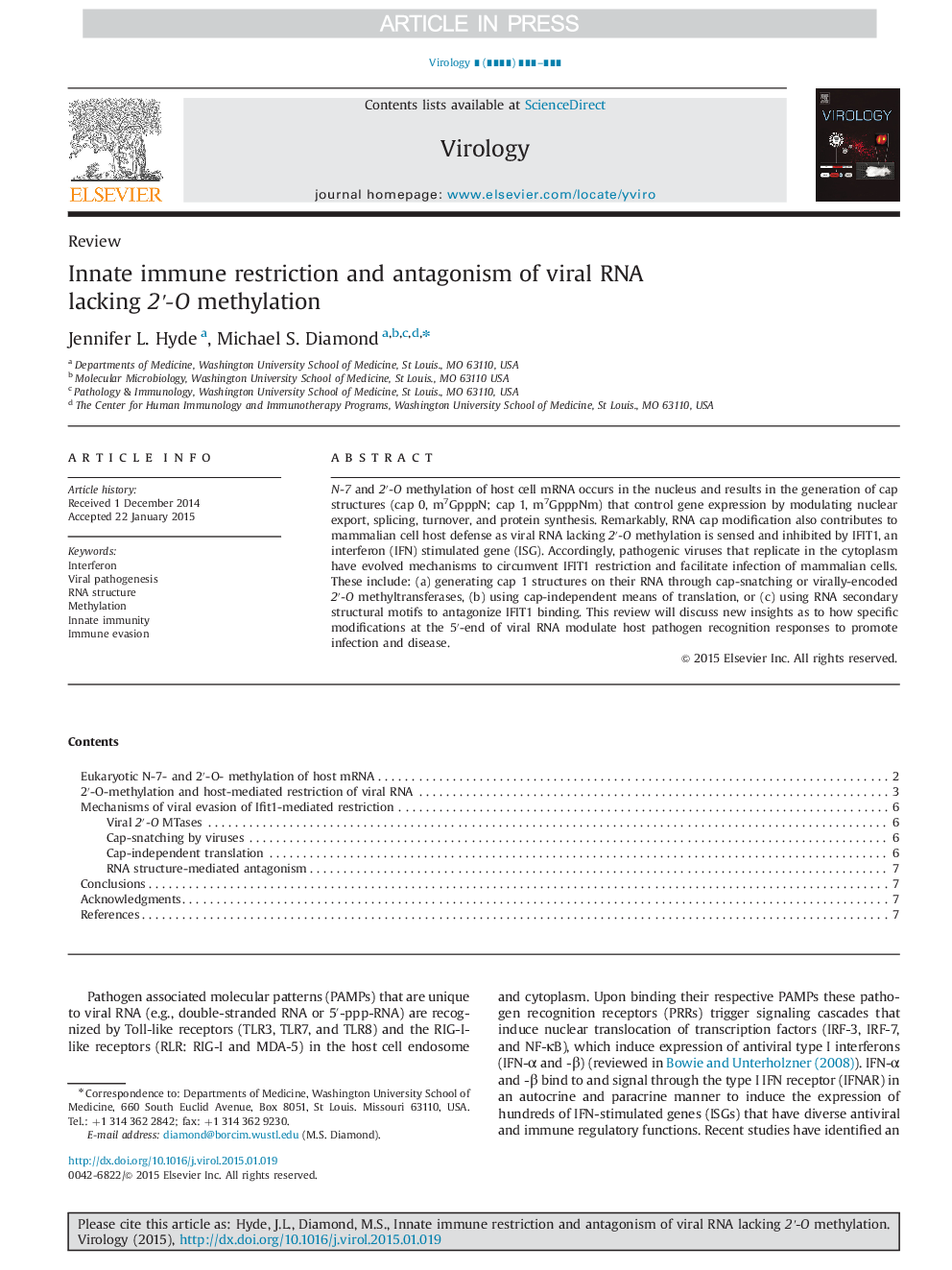| Article ID | Journal | Published Year | Pages | File Type |
|---|---|---|---|---|
| 6139166 | Virology | 2015 | 9 Pages |
Abstract
N-7 and 2â²-O methylation of host cell mRNA occurs in the nucleus and results in the generation of cap structures (cap 0, m7GpppN; cap 1, m7GpppNm) that control gene expression by modulating nuclear export, splicing, turnover, and protein synthesis. Remarkably, RNA cap modification also contributes to mammalian cell host defense as viral RNA lacking 2â²-O methylation is sensed and inhibited by IFIT1, an interferon (IFN) stimulated gene (ISG). Accordingly, pathogenic viruses that replicate in the cytoplasm have evolved mechanisms to circumvent IFIT1 restriction and facilitate infection of mammalian cells. These include: (a) generating cap 1 structures on their RNA through cap-snatching or virally-encoded 2â²-O methyltransferases, (b) using cap-independent means of translation, or (c) using RNA secondary structural motifs to antagonize IFIT1 binding. This review will discuss new insights as to how specific modifications at the 5â²-end of viral RNA modulate host pathogen recognition responses to promote infection and disease.
Related Topics
Life Sciences
Immunology and Microbiology
Virology
Authors
Jennifer L. Hyde, Michael S. Diamond,
